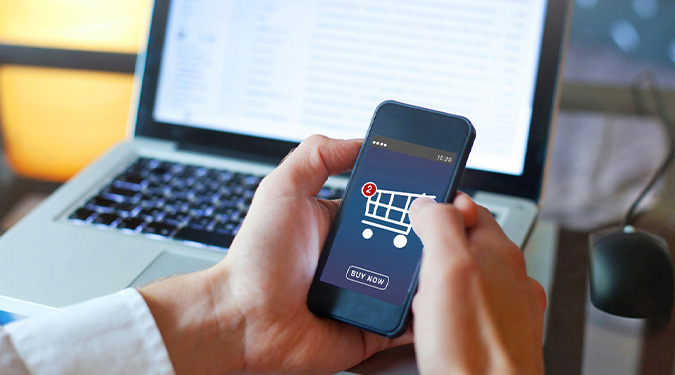Table of Contents
It’s clear how transformative the past few years have been for the B2B commerce space. Inflation, economic uncertainties, accelerating digital transformation and other macroeconomic trends have challenged B2B suppliers to quickly adapt to a rapidly evolving business landscape. As a result, there are five impactful shifts that will influence B2B commerce strategy in 2024.
1. Strong Focus on eProcurement as a Strategic Buying Channel
For many years, eCommerce was an afterthought for B2B suppliers – but that’s no longer true. According to McKinsey & Company, almost two-thirds of B2B suppliers offer eCommerce. The same percentage of B2B buyers prefer digital sales channels if they have a choice, even for larger, high-value orders. In fact, eCommerce now equals in-person B2B sales as a revenue driver.
While offering a B2B eCommerce site has become a necessity, it’s not always sufficient. We’ve had conversations with countless organizations across a variety of industries. Buyers tell us time and again that eCommerce is desirable, but what they really want is for their suppliers’ eCommerce systems to integrate with their internal eProcurement solutions. This integration, known as B2B connected commerce, is achieved via solutions such as PunchOut, Purchase Order (PO) Automation, and Invoice Automation.
In short, integration with customer eProcurement systems enables buyers to efficiently complete the procure-to-pay process, including shopping, creating purchase orders and completing the PO-invoice reconciliation process, directly within their own eProcurement system. There are many advantages for suppliers offering connected commerce, including:
- Tailored offerings that align with buyer needs significantly contributes to revenue growth
- Adapting to buyer needs strategically boosts order volume
- Increasing “stickiness” with integrated customers
- Improving efficiency within the order-to-cash process
Leading suppliers will continue to invest in eProcurement as a strategic sales channel, as it creates a mutually beneficial eCommerce experience that creates a winning digital customer experience strategy.
2. Purposeful Technology Choices That Provide Meaningful Returns
Despite indications of cooling inflation following years of record highs and interest rate increases, companies will continue to practice caution when making budgetary decisions. In 2024, they will take a hard look at the ROI of technology solutions before investing.
Technologies must drive meaningful value for stakeholders and partners, and organizations are carefully choosing solutions that support integration and automation to increase sales and revenue, reduce workloads, streamline processes, and increase accountability.
A study by Hobson & Company found that, in three years, companies generated an average ROI of 5-7X by investing in TradeCentric’s B2B connected commerce solutions. Benefits include streamlined operations in addition to increased revenue and improved order-to-cash processes. In the study, customers reported:
- 60% reduction in time spent setting up and managing eProcurement integrations themselves
- 80% reduction in time spent on purchase order management
- 75% reduction in time spent entering, correcting and integrating invoices
- 20% increase in revenue from both new and existing customers
- 30% reduction in outstanding days in Accounts Receivable
3. Real-Time Data and Enhanced Data Visibility
Data is the cornerstone of making business decisions with confidence, and the days of customers picking up the phone for pricing and product availability are fading away. Today, buyers require access to accurate and real-time information relating to inventory availability and negotiated pricing.
“As a buyer, I don’t want to have to go through 20 screens or even three; I want to use just one.” — Gene Alvarez, vice president and eCommerce analyst at Gartner Inc.
PunchOut catalogs are fundamental to providing this level of information. With a PunchOut catalog integration, buyers can access their suppliers’ eCommerce sites directly within their eProcurement solutions to shop for products with real-time inventory and pricing information. In contrast, hosted catalogs are often out-of-date the minute they’re created, make dynamic price changes impossible, and require manual re-uploading to buyer eProcurement systems for even simple updates.
Buyers aren’t the only ones who want immediate access to data. A recent TradeCentric report, which focused on B2B supplier eCommerce maturity, shows suppliers also need critical insights on buyer behavior. These data and insights are simply not available within the procurement systems they leverage today. We asked more than 120 B2B organizations which features or capabilities, outside of increasing customer satisfaction and revenue opportunities, were important to them when deploying a B2B eProcurement integration. They responded with the following:
- 63% wanted real-time visibility into transactions
- 61% valued insights into purchasing habits
- 35% cited insights into cart abandonment data
Our commitment to enabling more data visibility and insights continues in 2024 as we invest heavily in expanding the capability of the TradeCentric Business Intelligence Portal. This strategic roadmap intends to deliver even more robust data and analytics, empowering buyers and suppliers with unparalleled real-time visibility into transaction and spend data. The enhanced features will not only enable more informed decision-making but also elevate the management of trading partners to new heights.
4. Partnership with a Technology Specialist for Integration and Automation Solutions
Businesses are increasingly partnering with third-party integration specialists to achieve B2B connected commerce. There are significant financial and opportunity costs of using internal IT resources on B2B eCommerce integrations. In fact, these costs are one reason B2B suppliers have been slow to offer connected commerce solutions to customers requesting them in the past. They’re technically complex and often require tailored solutions for buyers using a wide variety of incompatible procurement systems. And, once you have them up and running, the integrations need to be maintained – which takes more time away from other important eCommerce projects.
Partnering with specialized software providers offers significant short and long-term benefits. Not only does it free up resources for other strategic commerce initiatives, but it also ensures robust, scalable integrations and keeps companies updated on market and technology changes. Specialized software providers such as TradeCentric offer tried and true solutions to build integrations efficiently.
5. Artificial Intelligence (AI)
AI stands as a pivotal force driving transformative changes in B2B commerce, and we anticipate its profound, long-term impact on TradeCentric’s evolution. In 2024, specific opportunities arise for leveraging AI technologies to benefit our customers:
- AI-Powered Business Intelligence: Utilizing AI to deliver predictive modeling and intelligent insights from our vast repository of 12+ years of B2B commerce data. This empowers customers to make informed decisions by forecasting market trends and buying behaviors while ensuring data privacy through anonymization and aggregation.
- Streamlined Data Analysis: AI-driven natural language queries enable quicker and easier data analysis. By posing questions like “What is the average time between purchase order to ship notice to invoice?” or identifying bottlenecks, users can swiftly obtain valuable insights.
- Accelerated Integrations: Leveraging our extensive integration library, AI will enhance the integration process, making connections faster, more intuitive, and successful. Drawing on 12+ years of best practices and data, AI optimizes the integration experience for both buyers and suppliers.
- Enhanced Customer Support: Integrating AI-powered chat functionality, our customers can expect a more robust support experience. The use of ChatGPT ensures faster and more efficient issue resolution, providing immediate support whenever needed.
Navigating the Future of B2B Commerce Trends
As we venture into 2024 and beyond, these forces will continue to shape the decisions, strategies, and partnerships that drive B2B commerce forward. The journey is marked by purposeful technology adoption, real-time collaboration, strategic partnerships, and the transformative power of AI.




